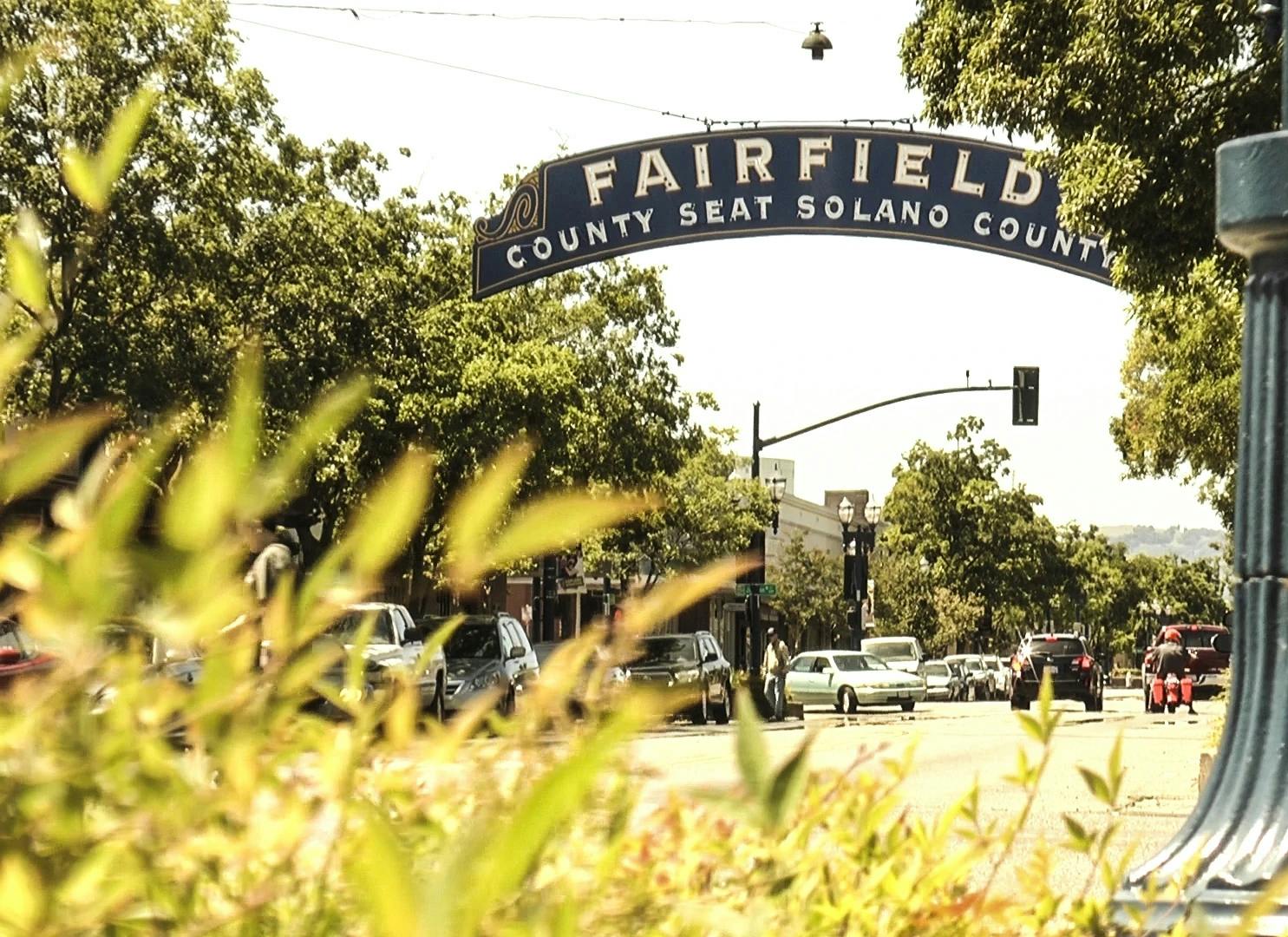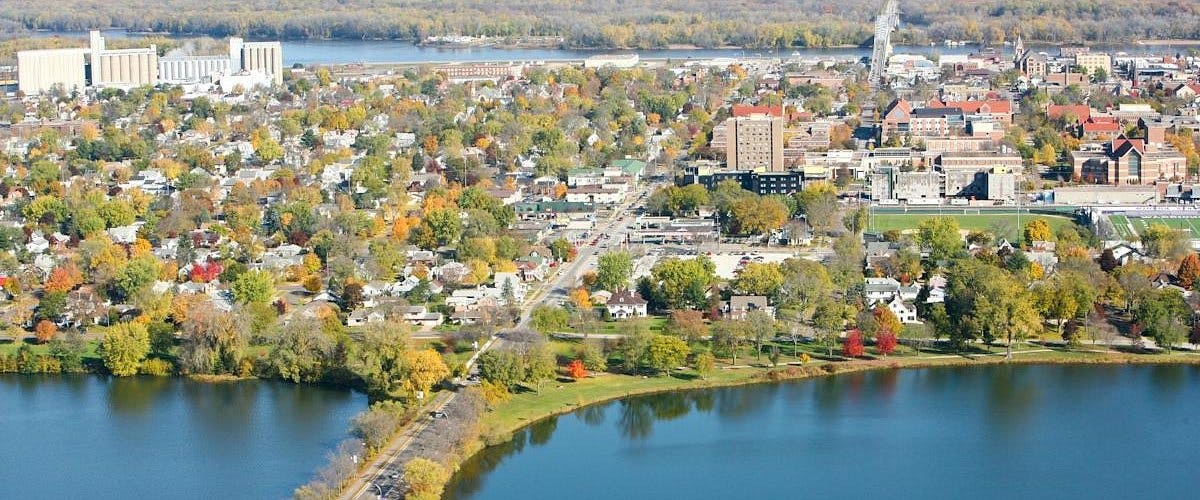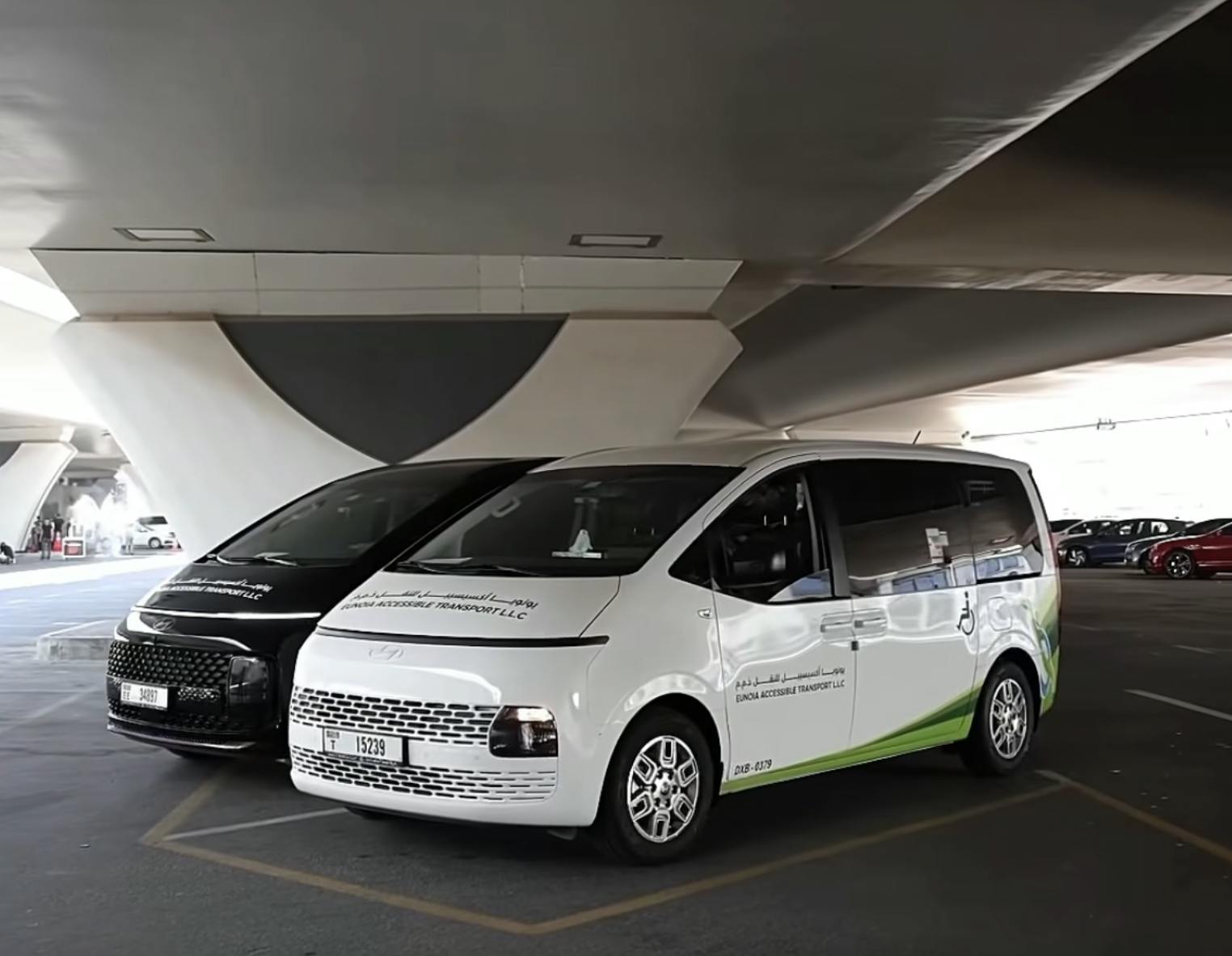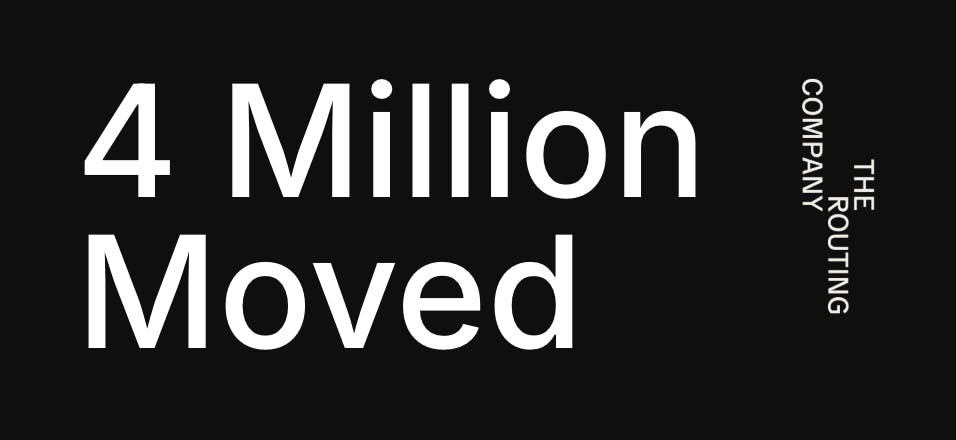
Interview with FAST Transit: How TRC and FAST are Innovating in the Paratransit Space
Transportation Manager for California's City of Fairfield, Diane Feinstein, and The Routing Company's CEO James Cox and CDO Dick Alexander sat down recently to discuss FAST Transit's new FAST Connect service, powered by TRC’s Pingo Platform.
Read on to learn what led Fairfield to deploy microtransit and find out where FAST plans to go next with Pingo Access.
James Cox: Welcome Dick and Diane. I thought we could start with some introductions. I'm James Cox, the CEO of The Routing Company. I’m really excited to talk about our launch here that we worked on together with you, Diane. Do you want to give a quick background?
Diane Feinstein: I'm Diane Feinstein, I'm Transportation Manager for the City of Fairfield's FAST Transit System in California. Fairfield’s a city of about 120,000 people and we just launched microtransit using The Routing Company software.
James Cox: Dick, do you want to give your background?
Dick Alexander: I'm the Chief Development Officer for The Routing Company. I worked on this project and prior to being with The Routing Company was with a company called Transdev and spent 43 years mostly on the operational side in the transit industry.
James Cox: Diane, before we get into the operational details of the launch, I'd love to hear why you are interested in on-demand transit and the commingling of paratransit vehicles and what made you want to try this?
Diane Feinstein: Well, as part of our post-pandemic strategy we knew that we were going to have to reinvent our service and look at things completely different than ever before.
We just had fixed route and paratransit service using cutaway vans and full-size 30, 35, and 40-foot buses, but we knew that we were going to have to look at things differently. So, in December 2020, we started a comprehensive operational analysis which we completed in September 2022.
One part of the major recommendations of that was that we reduce the number of our lesser used fixed routes and replace them with on-demand transit. It’s still a fairly new concept here in California but more and more agencies are looking into it. We call our service FAST Connect and we eliminated three fixed routes and implemented microtransit in two zones in Fairfield. We're testing it out in these two zones to start since Fairfield covers a large 40 square miles. We wanted to test drive it in a few areas before we spread it to hopefully other areas of the city that aren't currently being served.
James Cox: How has the growth of the service been so far?
Diane Feinstein: One thing I'm really pleased about is, week after week, the average amount of time from the time a person schedules a ride to the time of pickup is below 20 minutes. I didn't expect that right away.
We like to think of ourselves as innovators. To do that, we have to go through a learning stage of what works and what doesn't. I really felt like working closely with TRC was a great partnership. And it's continuing to be, because we get that weekly meeting support to go over what has happened in the last week, what's been resolved, and what's coming up.
Since we're going to be the first ones to try this commingled service, I'm not going to say that it hasn't had a few hiccups, but they've all been quickly resolved and we're moving forward very well.
James Cox: Thank you for that, Diane. Our original product started with on-demand transportation in Washington State, on Bainbridge Island, in the United States. And we've grown that product heavily from there. But you were extremely innovative in my mind in doing the commingled launch. I'd love to hear how you anticipated some of the challenges in your operations?
Diane Feinstein: When we put the RFP out, one of the things we were looking for was a company that would provide excellent on-site training before the service launch and also provide excellent and timely customer service post launch.
We had not received that with our previous technology provider. They were not very responsive, so the system was difficult to use.
James Cox: I'm glad that we were able to meet that need. One thing we've noticed in a lot of our other launches is that utilization continues to grow. We're getting eight to ten passengers per hour in our busiest launches and I'm really hopeful we can get there with you as well.
Keeping in mind we launched a month ago, I'd love to hear how your riders are responding and whether or not you're seeing efficiency?
Diane Feinstein: It’s convenient to have two modes of our operation handled by one provider. And with this commingling and having the paratransit community on the same vehicle, it makes somebody who has a disability feel like they're just another member of the general public. It offers a lot of opportunities for them to meet other people. This has already directly benefited the community.
The best example is Travis Air Force Base, which is Solano County's largest employer. As part of Fairfield’s partnership with Travis Air Force Base, FAST Connect helps people get to work more easily. It's not only getting them to work, but there's a major hospital on Travis Air Force Base called David Grant Medical Center. There are a lot of retirees in the area who need to get the medical care that they need.
James Cox: One reason I try to visit our launches is because you get a sense of the real life experience with Pingo. I previously spent a lot of time at Uber and Uberpool before starting this company with the research scientists - the mathematicians from MIT and TU Delft. Getting a sense of how someone is using the service to get to a medical appointment or to go do their grocery shopping, makes it real, and I appreciate your example there.
Diane Feinstein: There's a call center on Travis Air Force Base where almost all the workers are visually impaired. They really rely on the service. We have a train station nearby. So the service allows them to schedule a ride, whether paratransit, because they qualify for it, or microtransit. The cool thing that I've really been pushing when I talk to them is that a DART ride costs $4, but they can use microtransit for $1. Our normal cost is $2 for a ride, but if you’re senior, disabled, or MediCal eligible, you would qualify to only ride for $1.
And they've been fabulous about providing us with some of the best feedback we receive. They send me weekly feedback and I'm then able to explain why something happened, or give advice on how to use the service. We also had to work out getting on an air force base, which is not easy. So, we have kind of a stop at the visitor center, during certain hours, where people transfer vehicles in and we make stops at three locations on base. So that has made me feel really good because they were very concerned about still being able to get to work.
James Cox: When I think about what transit can look like five to ten years from now - with some of the experimentation and innovation thus far - I'm hopeful that paratransit will be far more convenient for everyone that has access to it and at a reasonable cost.
I'd love to hear what your goals are for the service and what you think it might look like in five or ten years?
Diane Feinstein: We really want to take pride in the service, be well-known for being the best microtransit operator in California, and grow the service to serve the whole community. Because Fairfield is 40 square miles, we currently can't serve everywhere in the community. It's just not feasible. But, we're also trying to reach a higher income demographic that we've never reached before, because with on-demand service people know how to use Uber and Lyft. For example, this is much more affordable for getting around from your house to our local community college that's in one of our Cordelia microtransit zones.
James Cox: Dick, you've been in the industry for far longer than me. I'd love to hear about how you've seen things develop and why you've ended up in the on-demand paratransit commingling space.
Dick Alexander: When I started in this industry, transit did two things: it was a fixed route bus, usually 40-feet in length, running down a main road. And there was paratransit service that was defined by the Americans with Disabilities Act. ADA’s rules were kind of defined by what the technology could do at the time ADA was developed.
I always felt that we were kind of stuck in those modes. We had to have advanced reservations for paratransit service and fixed routes had to run on some kind of fixed schedule with headway. We tweaked it for decades, but we were just tweaking the same service - maybe we increased the headway or we decreased the headway or we changed a route slightly - and those never came quickly.
What got me into The Routing Company, was the fact that I always felt there was this third solution out there that nobody's ever touched. ADA riders want the freedom to be able to go somewhere when they want to go, and not have to pre plan their lives days in advance. If you need to go pick up a two-liter bottle of soda at the grocery store, you don't want to have to plan that two days in advance or a day in advance.
With fixed route riders, either you were capable of walking the quarter mile or a half mile to that bus stop or you just didn't have an option. It was all or none.
And then technology said, we have a solution. The technology can come in, work on demand, and that paratransit rider can pull a trip just like anybody else can. That person that never was in a service area of a fixed route now has access to a service that they never had. And this amazing platform can organize that and make it all work. It's been really exciting because to me this is revolutionary in our industry that we can finally offer a service in a shared ride environment that everybody can have access to no matter where they are geographically or where they are in terms of their physical abilities.
James Cox: Diane, I'd love to hear about the experience training your team on the new product especially given the combination of something new on-demand with something existing paratransit.
Diane Feinstein: I can't speak more highly of the expert and patient training provided by Carlyn Hunt. We think Carlyn is great. I mean, she probably spent almost a month with us both around the time of when we implemented just the DART portion of it. And then another week or ten days when we did the commingling of the microtransit. We were really happy we did them both. It would have been too much we believe to have done them both at the same time, especially when you're launching a new product. Down the line, I think that's definitely very doable. But she was very well versed and she was able to work very well with MV transportation staff, as well as our FAST administrative staff.
And we’ve enjoyed working with Jackson and with Cody. I liked how you have a pre-launch manager and a post-launch manager that we can rely on. Another thing that we really valued was the weekly meetings. I'm sure over a period of time won't need them to be as often, but right now with us being the ones to kind of launch all the new changes, that has been extremely helpful. We knew going in based on our past experience that that was extremely important and you guys hit it out of the ballpark as far as that goes.
James Cox: We build our products with our customers' needs in mind and the funny thing about the weekly meetings is, we still have weekly meetings with our first U.S. customer. And they genuinely make our product better. We can't solve problems we don't know about, right?
Diane Feinstein: That's right.
James Cox: And we want to innovate with you rather than have some flawed product that gets used and never updated. In my opinion, that is a problem that many transit software providers have.
Diane Feinstein: And it's already been updated several times since we launched last month. So there's new updates happening all the time.
James Cox: I appreciate you sharing that because it's important to be constantly innovating, or unfortunately, you fall behind and there's plenty of unsolved problems out there in this space.
Dick Alexander: What Diane and her team are doing benefits all of our customers, even beyond FAST. And vice versa. You experience those updates, but so do all the other customers working with TRC. That sense of community amongst our platform’s users is a strength of ours.
Diane Feinstein: It's great fun to be part of a revolutionary product I really think is going to help change the industry. I appreciated you being upfront about the fact that this is a developing product that you want to make better and better. You didn't make promises that you can’t keep. And if something comes up, and it can't happen at exactly a certain time, you come through and tell us when it's going to be available so that we can work through that.
James Cox: Diane, thank you for taking the time today. And know that, as we discussed even before you launched the service, I'm always here if you need me. So is Dick.
Diane Feinstein: And I can tell every person on your team that we've had the privilege to work with that their dedication is obvious. They know that we're dedicated and we want to put out the best service possible too. So it's been a great collaboration as far as that goes.
Contact us today at move@theroutingcompany.com to get started.
Note: this interview was edited for length and clarity.


